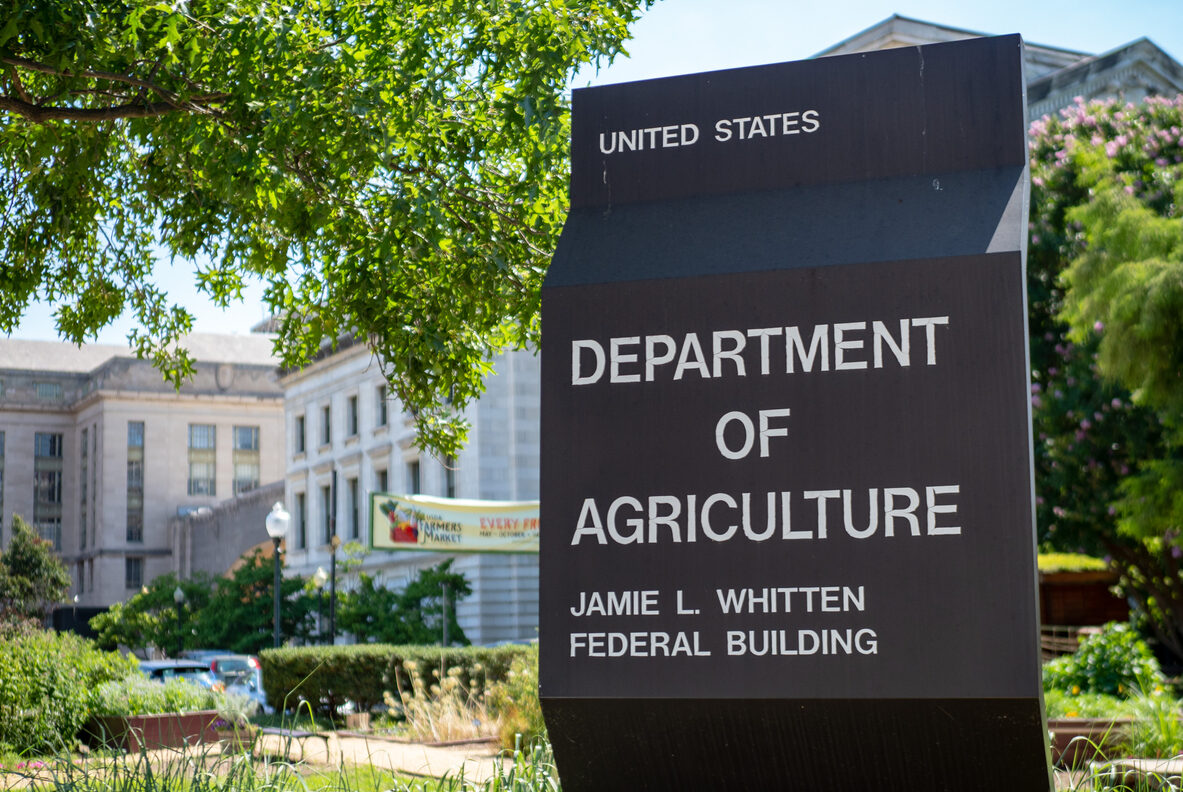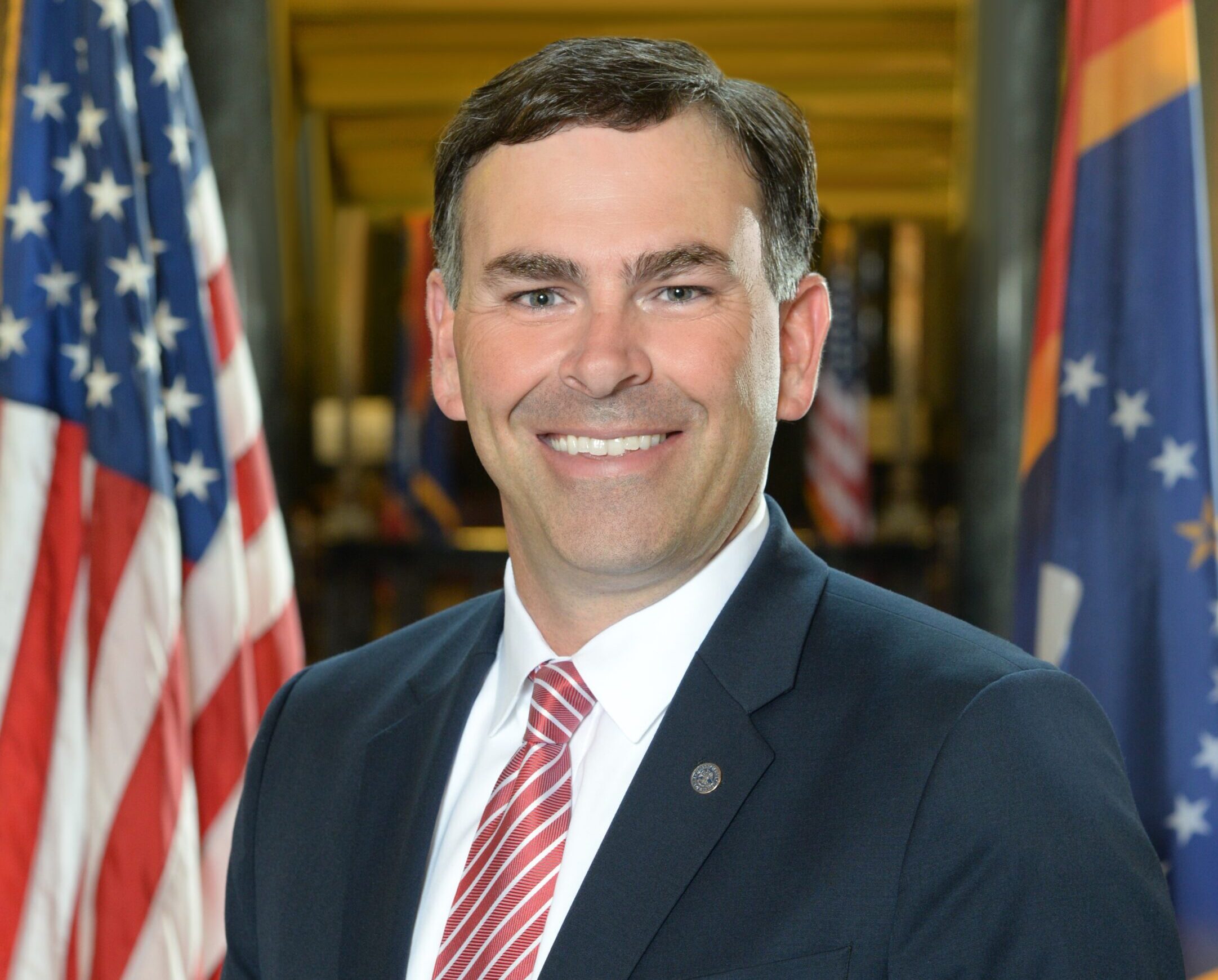To be president is to be sued
![Rosalynn Carter with Amy and Pres. [Jimmy Carter] as she leaves for Latin America, Brunswick airport (Library of Congress, 1977)](https://americanhabits.org/wp-content/uploads/2023/08/Carter.jpeg)
Today, political axes are thrown in the courtroom almost as often as at the ballot box or from the Twitterverse soap box.
In four years, California sued the Trump administration 110 times. In eight years, Texas sued the Obama administration a mere 50 times. And in the first two years of the Biden administration, Texas filed 20 lawsuits while other states have brought 63 cases.
The targets are the usual suspects. For California and its allied states, the lawsuits attacked everything from the citizenship question on the census, Trump’s immigration policies such as the border wall and the so-called “Muslim ban,” the attempt to cut off funds to sanctuary cities, and a variety of health, safety, and environmental regulatory rollbacks. Most of these lawsuits were successful.
For Texas—which other conservative states have usually joined—the targets range from the Biden administration’s failure to enforce immigration laws and COVID vaccine policies to abortion mandates. This seems to be a growing part of what activist state attorney generals do. Before he was the Governor of Texas, Greg Abbot was Texas’s attorney general, and he once quipped, “I go to the office. I sue the federal government. Then I go home.”
State Nullification of Federal Laws
These lawsuits are the latest manifestation of states’ resistance to federal policies they don’t like. In the early days of the Republic, some states latched onto the “nullification doctrine,” a theory wherein a state could supposedly ignore a federal law the state deemed to violate the federal Constitution. The doctrine was based on the notion that the sovereign states created the federal government through a compact, and the states retained the right to interpret the Constitution as they deemed fit—regardless of what the Supreme Court might have held. As one example, some states claimed the power to nullify or ignore the Fugitive Slave Act, which required their cooperation in returning runaway slaves. In another, Pennsylvania tried to reject a federal court decision and even called out the state’s militia to halt the court’s order. The U.S. Marshall’s office ended that, and no other states supported Pennsylvania. Other attempts at nullification involved tariffs, Indian affairs, and Ohio’s attempt to tax the Bank of the United States.
The most troubling attempt at nullification arose from the tariff adopted by Congress in 1828. The southern states thought they discriminated against them because they imported more tariff-qualifying machinery than the northern states. When newly elected President Andrew Jackson failed to resolve the issue, South Carolina took the matter into its own hands when, in 1832, a state convention adopted the Ordinance of Nullification. That ordinance effectively declared the tariff unconstitutional and unenforceable in South Carolina. Several months later, in early 1833, South Carolina began to organize its military to actively resist the federal tariff. A month later, Congress authorized the use of force against South Carolina. Fortunately, cooler heads prevailed, and Congress adopted a compromise tariff acceptable to South Carolina. What historians call today the “nullification crisis” never led to war or insurrection.
When attempts at nullification reached the federal courts, they did not fare well. Drawing on the records of the Constitutional Convention, the state conventions, and the Federalist Papers, the courts repeatedly struck down the states’ attempts to nullify federal laws this way. First, the courts concluded that the federal government was formed not by independent sovereign states but by the People who ratified the Constitution in each state. And second, the Constitution explicitly states that “the Laws of the United States … shall be the supreme Law of the Land; and the Judges in every State shall be found thereby.”
By and large, this attempt to assert states’ rights through nullification died with the Civil War. The United States was henceforth recognized as paramount, and states lacked the authority to declare either independence or the right to ignore federal law.
But that didn’t stop states from trying to avoid federal laws they found unpalatable. After the Supreme Court’s 1954 desegregation decision in Brown v. Board of Education, 10 southern states tried to ignore the ruling and revive the notion of nullification. At first, they took the language from the decision which ordered the states to desegregate their schools “with all deliberate speed” as carte-blanche to slow-walk any steps toward desegregation.

Opposition to the decision gathered into a new nullification movement. Most of the southern members of Congress signed a document known as the “Southern Manifesto” that rejected the Supreme Court’s holding in Brown because the law must be based not on what the Supreme Court thinks but on the “separate but equal” doctrine that has informed the “habits, traditions, and way of life” of the people. Brown, moreover, was a “derogation of the authority of Congress.”
Buoyed by the manifesto, southern states began to pass resolutions declaring Brown to be unlawful and unenforceable. The Virginia legislature, for example, adopted a resolution stating that Brown was “an unlawful and unconstitutional assumption of power which does not exist” and that the “commonwealth is honor bound to act to ward off the attempted exercise of a power which does not exist lest other excesses be encouraged.” Georgia passed a resolution asserting that the “Court has deliberately resolved to disobey the Constitution of the United States, and to flout and defy the Supreme Law of the Land.” In the face of a slew of such nullification resolutions, the Court took up the desegregation of the schools in Little Rock, Arkansas.
When the first efforts at court-ordered desegregation resulted in protests, troops, and mobs, the school board convinced a federal district court to allow it to postpone the desegregation of its schools. The court wrote that a delay was necessary because such desegregation was contrary to “the pattern of southern life which has existed for over three hundred years” and the belief by many people that “the Brown decisions do not truly represent the law.” After the 8th Circuit Court of Appeals reversed, the Supreme Court took up the case.
At the Supreme Court, the school board argued that delay was necessary because the desegregation order resulted “in an intolerable situation and great disruption of the educational process” and the state needed to “quell violence, disorder, and organized resistance to desegregation.” While the district did not overtly argue that a state had the power to nullify either federal law or a Supreme Court opinion, what was implicit in its argument was that a state could choose to obey a Supreme Court order in any way it deemed necessary—even if that meant not obeying any time soon.
In its 1958 decision in Cooper v. Aaron, the Supreme Court unanimously rejected the school board’s arguments. The Court reaffirmed its holding in Brown and upheld the 8th Circuit’s refusal to delay the Little Rock desegregation order, but it went further. In what has proven to be a controversial assertion of authority, the Court forcefully articulated the principle of judicial supremacy. It held that the Supreme Court was the final arbiter of what the Constitution says and that no state, governor, or even member of Congress can refuse to follow the Court’s interpretation. As the Court put it in Cooper, “the interpretation of the Fourteenth Amendment enunciated by this Court in the Brown case is the supreme law of the land, and Art. VI of the Constitution makes it of binding effect on the States.”
With Cooper, the ability of a state to defy federal law through nullification—either through a Congressional enactment or via a state law of defiance—has been foreclosed. So, what should a state do if it disagrees with federal law? If it is a statute that a state complains about, its people can change the law through their elected representatives. But if it disagrees with an administrative decision as being unlawful, it can go to court. And if it disagrees with a holding of the Supreme Court, it can try to persuade the Supreme Court to overrule its precedent.
The Erosion of State Legislative Power over Federal Lawmaking—The 17th Amendment
The first avenue of persuading Congress to change the law is less of an option today than when the Constitution was first drafted. Originally, under Article I of the Constitution, state legislatures had the power to appoint their U.S. Senators. But in 1913, the 17th Amendment directed that the people of each state elect Senators. The Amendment culminated in a progressive campaign to expand the federal government’s power to further an aggressive administrative agenda.
This was a radical change to federalism that the Founders would not have embraced. For example, when the adoption of the Constitution was being debated in New York, Alexander Hamilton argued that the selection of senators by legislatures would foster “a uniform attachment to the interests of their several states.” After all, if a senator displeases his state’s legislature, he might not be reappointed for another term.
…the federal government has grown in ways never envisioned by the Framers—with much more limited input from state governments.
But with the 17th Amendment, the state governments could no longer directly participate—through their appointed senators—in developing federal law and policy. In time, this has led senators to cater more towards the wants of the voters and campaign contributors rather than the interests of the state governments. When combined with the federal government’s power to impose income taxes in the 16th Amendment, the federal government has grown in ways never envisioned by the Framers—with much more limited input from state governments.
The Growth of State Litigation Against the Federal Government
The recent growth in state lawsuits against federal agencies may directly result from the states’ diminished authority in the legislative process. Thus, when a state embraces a policy contrary to federal law, the states have only one option: lawsuits. After all, nullification has long been discredited and is not viable.
The states on both sides of the political spectrum have fully embraced litigation to combat federal policies contrary to the state’s policy judgments. Whether the policies concern immigration, environmental protection, or gun rights, states will sue. The states need three things to succeed: standing to sue, a good legal theory, and a favorable forum.
A State Must Have Standing to Sue
Article III of the Constitution establishes the judicial branch of the government. It is not enough that a plaintiff—whether an individual, corporation, or state doesn’t like a particular federal law, regulation, or action. The plaintiff must have standing to sue—meaning it has a unique and particularized injury. A taxpayer cannot sue over a federal policy simply because some of the taxpayer’s money will be spent on a disliked policy because no unique injury is involved. However, if a plaintiff can demonstrate some unique harm—such as suffering some unique financial or physical damage—that element of standing may be satisfied. The plaintiff must also demonstrate that the injury is caused by the challenged governmental action and that the court can redress that injury through a judicial remedy.
These considerations came before the Supreme Court front and center in the recent argument over whether Biden had the authority to forgive student loans in Nebraska v. Biden. Most people in line to receive loan forgiveness have not suffered any injury. Indeed, they will reap up to $20,000 in benefits. They cannot sue. Nor does a state have standing simply because it doesn’t like the program.
Instead, the states argued that at least one, Missouri, had standing. Missouri has chartered a student loan administrative body called the Missouri Higher Education Loan Authority. It makes money servicing those loans and generally remits some of that money to the State of Missouri. Thus, the state argued that fewer fees collected for servicing the loans and Missouri will suffer a financial injury. The Biden administration countered that there was no actual legal obligation for the Authority to remit money to the state, so standing was too speculative. The Court questioned both sides about the viability of these arguments. If the Court finds a real injury, the lawsuit will proceed, and the Court will reach the merits. If not, the case ends there.
A Good Legal Theory
A state will usually not jump into a lawsuit challenging a federal policy or action unless it can articulate a credible legal theory. For example, when California challenged President Trump’s ban on funding sanctuary cities, California successfully argued that the president lacked the statutory power to take such a unilateral action. Many cases are based on the theory that a particular regulatory action violates the law because it wasn’t properly enacted with an opportunity for public notice and comment as required by the Administrative Procedures Act.
More recently, when West Virginia sued the EPA over the EPA’s “Clean Power Plan,” the state argued that the Clean Air Act didn’t give the EPA the express power to adopt such a sweeping regulation. As the Court wrote, the EPA conceded “that its rule would impose billions in compliance costs, raise retail electricity prices, require the retirement of dozens of coal plants, and eliminate tens of thousands of jobs.” This, West Virginia argued, and the Court agreed, invoked the “major questions doctrine.”

Underlying this relatively new doctrine is the related doctrine of Separation of Powers. Put simply, Congress makes the laws, and the executive agencies carry them out. While agencies can fill in the gaps in ambiguous laws or the fine details—such as how many parts per million of a substance is safe—the agencies cannot write new laws wholesale. Under the major questions doctrine, if a regulation is far-reaching enough in its impact, Congress must expressly authorize that regulation. In the Clean Power Plan, the Court held that the regulation was so impactful that it could only be adopted if Congress gave express authority to do so in the Clean Air Act. Because the Act contained no such authority, the regulations were struck down.
In addition to having a good legal theory overall for a case, a state must consider what sort of remedy is possible. In what has become increasingly controversial in recent years, some federal district courts have issued rulings that vacate a rule or enjoin a specific administrative procedure nationwide. The Federal Rules of Civil Procedure, which govern the federal courts, leave room for interpretations that both support and reject the use of nationwide rulings.
At the oral argument in one of the student loan cases, Justice Neil Gorsuch pointedly asked whether it was appropriate for a single district court to hold such power over a nationwide rule. As he put it, “courts can interfere with the processes of government through two individuals in one state who … can seek and obtain a universal relief barring it for anybody anywhere.” States and plaintiffs on both sides of the political spectrum have sought nationwide rulings. And states, plaintiffs, and legal experts from both the left and right have variously praised and criticized the practice. Whether the Court limits the practice in student loan cases remains to be seen.
Finding the Right Court
Much has been said that when Texas sues the federal government, it often files in certain federal district courts where it knows it will get a judge who may show some sympathy to the arguments. But this is not a new phenomenon. California tended to file its lawsuits against President Trump in federal district courts in and around San Francisco. Plaintiffs’ lawyers would not be doing their job if they didn’t think about the best court to file a lawsuit.
California tended to file its lawsuits against President Trump in federal district courts in and around San Francisco.
Judges are generally impartial in the cases that come before them—that is, they should have no vested financial or personal stake in the outcome of a case. If they did, a good judge should recuse him or herself from the case. But judges have varying philosophies on interpreting the laws and the Constitution. If they adhere to originalism, they might be more inclined to rule in a particular way in a case involving a constitutional issue. They might rule another way if they are more sympathetic to a living constitution. Of course, no one can predict how any judge will rule in a particular case. Originalists sometimes disagree over the original public meaning of a particular clause of the Constitution. And living constitutionalists may be motivated by very different instincts regarding what the ideal of the law should be.
States and other plaintiffs will always try to choose a judge they think will at least give serious consideration to their arguments. That is why we should expect Texas to file more lawsuits before its preferred federal judges and why, if the next president is a conservative Republican, California will return to the federal court in San Francisco.
Final Thoughts
The tug and pull between the states and the federal government is a feature, not a bug, of our federal system of government. We need some centralization, but not at the complete expense of state interests. Since the Republic was founded, the ability of states to ignore or override federal law and policy has been limited. But that will not and should not prevent the states from trying to make an impact on federal policy that affects them. Thus, we will continue to see state litigation against the federal government.
James S. Burling is vice president of legal affairs at Pacific Legal Foundation, a nonprofit legal organization that defends Americans’ liberties when threatened by government overreach and abuse.



